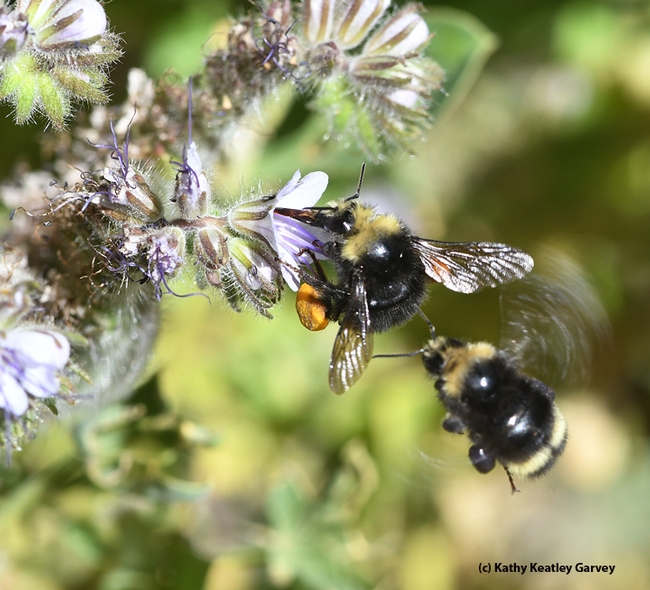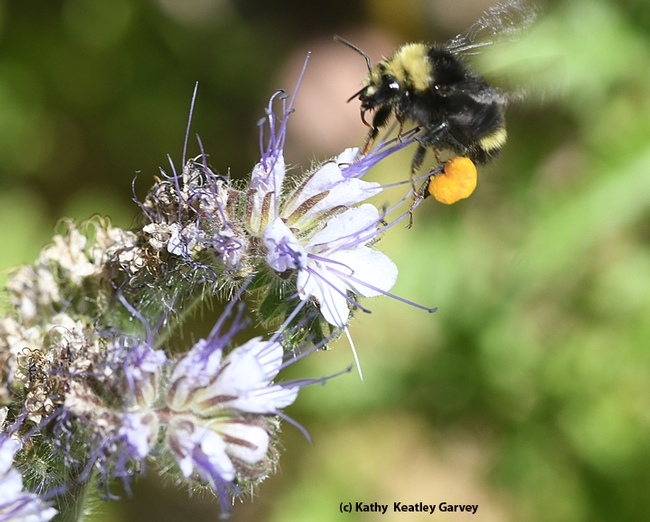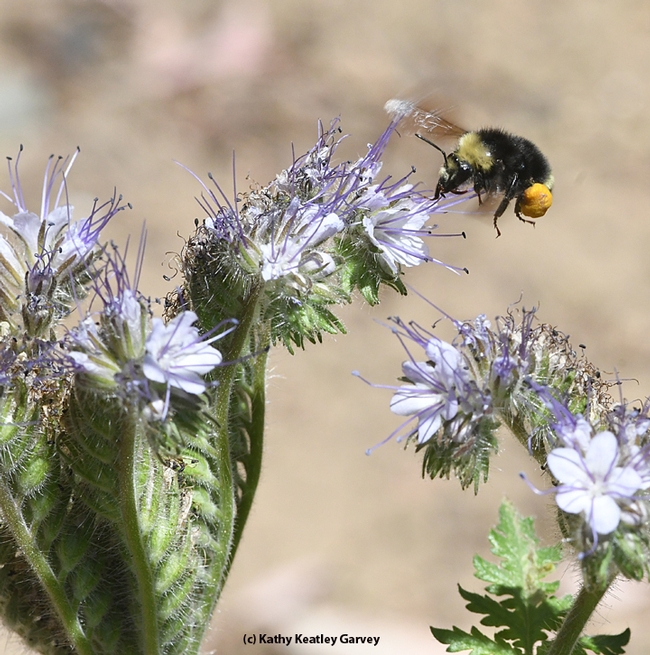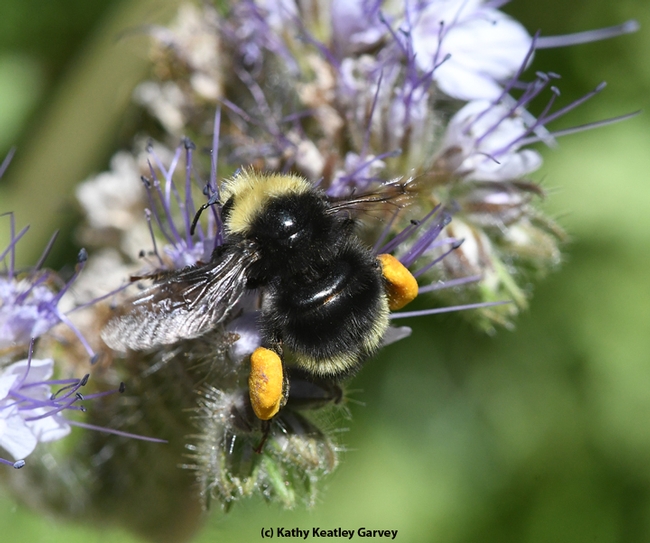Talk about pollen!
The bumble bees, Bombus vandykei (as identified by Robbin Thorp, distinguished emeritus professor of entomology at the University of California, Davis), were buzzing all over the Phacelia last week on the central campus.
One bumble bee carried a heavy load of orange pollen (collected nearby), while another, a small load of blue pollen. They both wanted the same flower.
I'll have what you're having! Move, please.
Sorry. I'm not finished here.
She didn't move. Not then.
Both the bumble bee and the plant are natives.
The genus Phacelia, also known by its common name, phacelia, or scorpionweed or heliotrope, is native to North and South America. Its genus includes some 200 species.
VanDyke's Bumble Bee is found in the Pacific Coastal states, including Washington, Oregon and California. Bombus vandykei is one of about 250 described species of bumble bees worldwide. All belong to the genus, Bombus.
The vandykei males are extensively blond, but not the females. In fact, the females are often confused with the yellow-faced bumble bee, Bombus vosnesenskii. (A distinguishing feature: on the vandykei, the yellow abdominal band is on T3 rather than T4.) See BugGuide.Net.
Want to know more about bumble bees and how to identify them? Be sure to pick up a copy of Bumble Bees of North America: An Identification Guide (Princeton University Press), co-authored by Thorp and fellow scientists Paul Williams, Leif Richardson and Sheila Colla. It won a 2015 Outstanding Reference Sources Award, Reference and User Services Association, American Library Association.
A really innovative touch to the Princeton University site is the buzz. Click on the link, http://press.princeton.edu/titles/10219.html, and you'll hear the buzz.
It's just like being in a Phacelia patch filled with bumble bees!
Attached Images:

It's mine--move away! Two bumble bees, species Bombus vandykei, seek the same Phacelia blossom on the UC Davis central campus. (Photo by Kathy Keatley Garvey)

Check out the heavy load of pollen on this bumble bee, Bombus vandykei. (Photo by Kathy Keatley Garvey)

The Phacelia is a plant that native bees, including this native bumble bee, Bombus vandykei, love. (Photo by Kathy Keatley Garvey)

Saddle bags of pure gold? No, golden pollen carried by the Bombus vandykei. (Photo by Kathy Keatley Garvey)